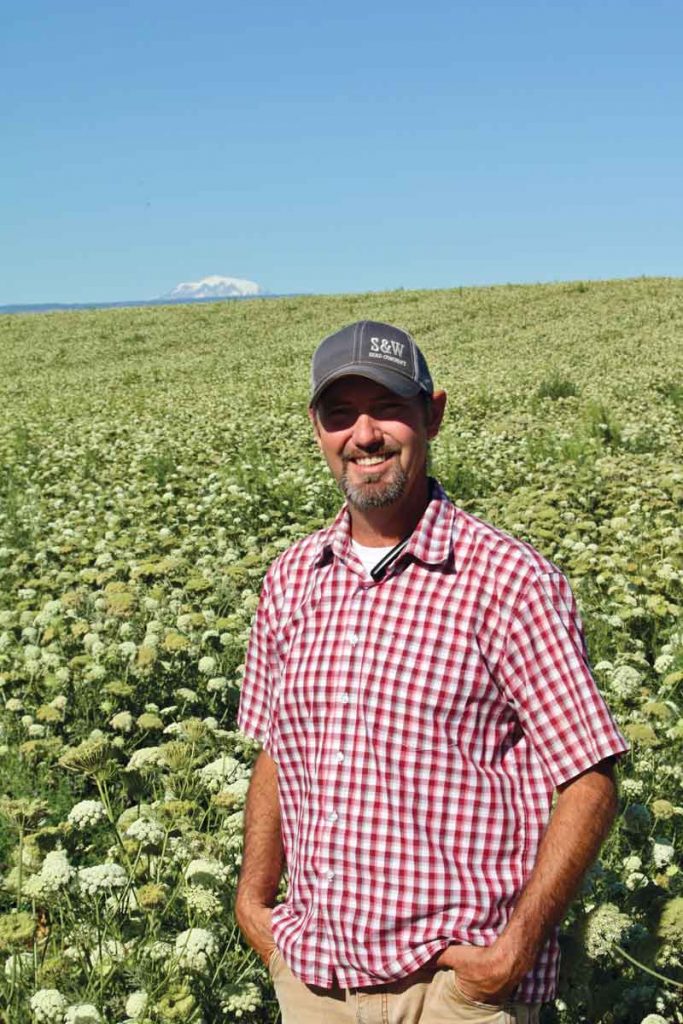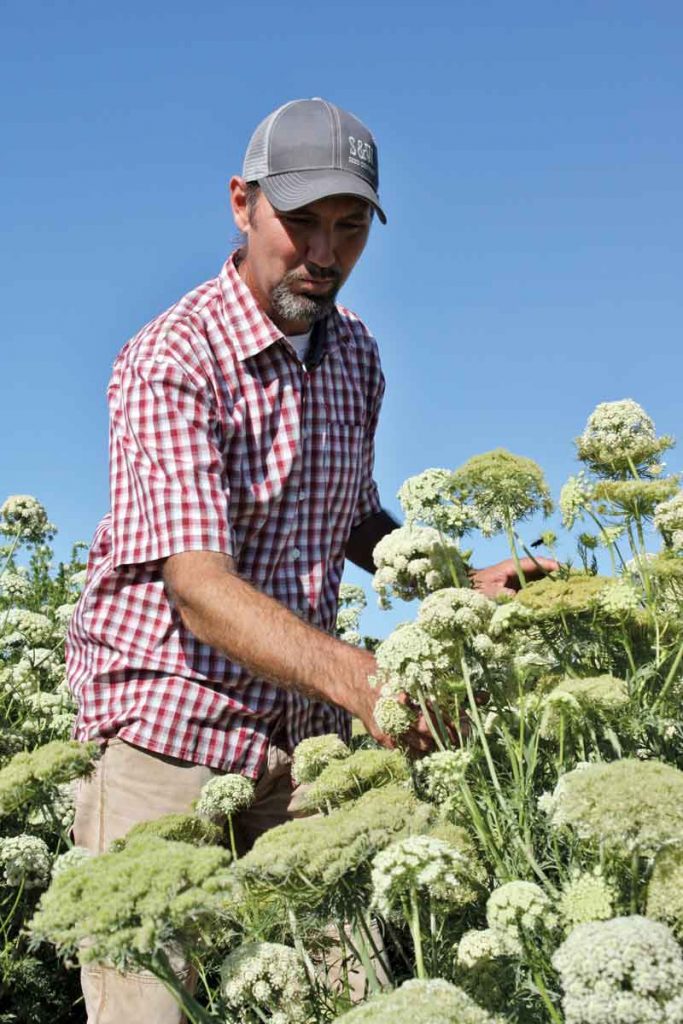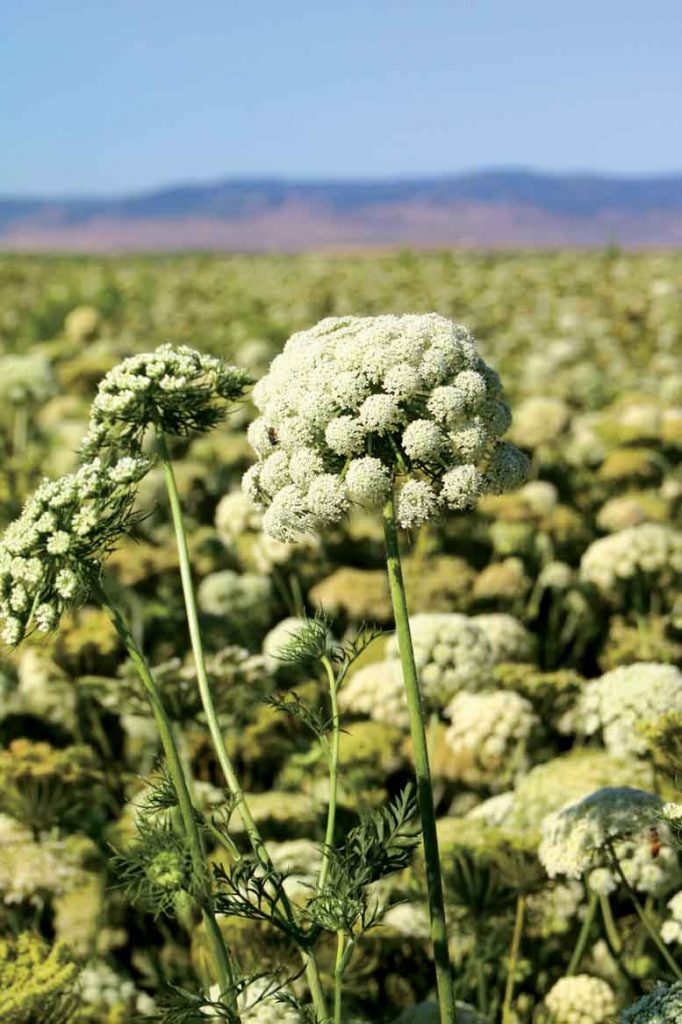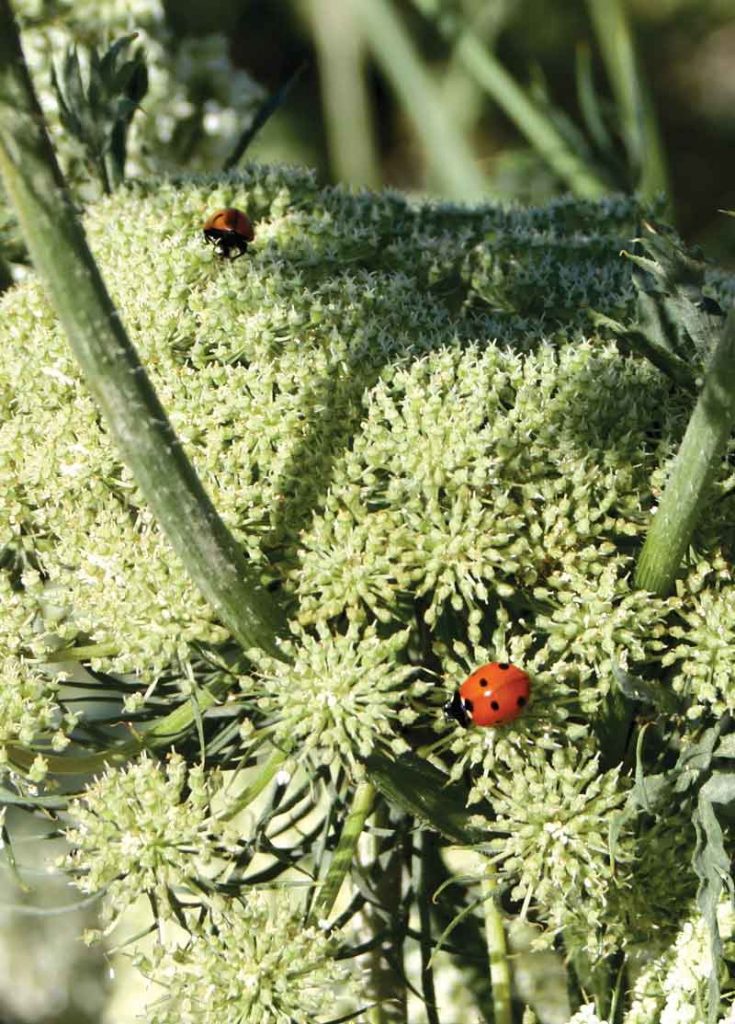
Story and photos by Denise Keller, Editor
Zak Stephenson farms 1,800 acres spread across the White Swan area of the Yakama Indian Reservation in Central Washington. But it’s a 40-acre field of carrot seed that demands as much time as he spends on the bulk of his farm. In his third year growing carrot seed, Stephenson is finding it to be highly labor intensive but is embracing the challenges that come with learning a new crop.
In addition to carrot seed, Stephenson grows 1,000 acres of alfalfa and 160 acres of alfalfa seed, as well as wheat as a rotation crop. In the past, he has farmed up to 800 acres of alfalfa seed, but that number has been decreasing due to changes in market demand.
While looking for an opportunity to fill some of the void left by the dwindling alfalfa seed acreage, Stephenson was approached by Central Oregon Seeds, Inc. The company produces seed for major seed companies and was looking for growers in the area to expand its carrot seed production. Stephenson planted his first crop of carrot seed in 2017 and is growing a Bejo Seeds variety this year.

Pollinating the Crop
Stephenson grows carrot seed on a five-year rotation, planting the crop after wheat. It’s a 13-month crop, planted in mid- to late-August and harvested mid-September the following year. During a six-week period mid-summer, bees do much of the heavy lifting in developing the seed crop.
“It’s all about pollen transfer. You want the bees actively foraging and collecting pollen and nectar from the carrots. The male plants are producing a lot of pollen. The bees are moving from that and jumping to the female plants, and they’re covered in pollen,” Stephenson describes.
He stocks the field with 3.5 hives per acre, almost overloading the field with pollinators.
“Carrots aren’t their favorite food in the world, so you want as many as you can. A certain percentage will go into something a little sweeter with higher sugar content,” he explains.
He also uses leafcutter bees in the carrot seed because he has more leafcutters than needed for the current alfalfa seed acreage. His experience growing alfalfa seed, a crop that has been part of the family’s farming operation since the 1950s, has been beneficial as he gets into carrots. It’s helped him come into the crop knowing how to deal with pollinators, understanding how seed develops and owning the right harvest equipment. However, alfalfa seed requires less labor, allows for more mechanical cultivation and offers more chemical options for weed control compared to the hybrid carrot seed crop.
“It’s been more hands on. You have to look at it every day,” the grower says of carrot seed. “It’s a complex crop.”

Managing the Challenges
The crop requires the most babysitting in the spring, Stephenson says. A crew of 15 typically hoes the fields and thins the rows of female plants to create 8 to 10 inches between plants, which allows each plant more space to grow flowers. Herbicides are also applied.
This year, Stephenson opted to forgo the extra help due to concerns about COVID-19. This made for an especially busy spring for his seven full-time employees and meant he had to live with some weeds in the field.
When June rolls around, Stephenson applies insecticides, miticides and fungicides to keep problems at bay before introducing the bees a week later. Once the bees are out of the field, another cocktail of chemicals is sprayed to eliminate pests. The male plants are mowed, and female rows are weeded.
As a relatively new carrot seed grower, Stephenson is still fine tuning his management of the crop. The first two years’ crops had low germination rates, requiring more cleaning of the seed, which ultimately reduced yield. The grower attributes the lower germination rates to lygus bugs. The insects often migrate from hay fields when hay is cut, and then sting the seed and make it no longer viable.
“If we can’t control that, we can’t make seed,” Stephenson says.
Lygus bugs are difficult to control and may be building up resistance to some chemicals, according to Stephenson. The grower scouts fields weekly and monitors the buildup of lygus populations. However, once bees are in the field, he can no longer spray insecticides.
“Whatever kills the lygus is going to kill the bees,” he says.
Unlike the cool, wet springs the area has had the last couple years, this year has been drier and lygus pressure has been lighter. Stephenson is curious to see how this affects the germination rate, hoping that less insect pressure results in better germination. In late July, the crop was setting well.
“It’s all going to be in the next couple weeks. This is where the crop is made. Once the bees come out, those four to five weeks are really critical,” the grower explains.

Enjoying the Experience
Stephenson is a fourth-generation farmer. His great-grandfather moved to an 80-acre farm in the area when the irrigation project opened around 1930. His grandfather expanded the farm to what it is now. His dad, Vern, is mostly retired but helps during harvest. Stephenson graduated from Washington State University with a general ag degree in 1997 and has been managing the farm since 2000. His brother, Alex, is a partner and manages the farm’s chemical program and hay trucking.
After farming hay and other row crops all his life, Stephenson is enjoying growing a hybrid crop.
“Seed in general is interesting to me. I like working with the pollinators and watching them work. I’ll come out to the field and watch the bees move back and forth. I find that interesting and enjoy that,” he shares.
He also has liked learning about drip irrigation, which is used in carrot seed production because it delivers water deeper to the roots and because bees won’t work under sprinklers.
“It’s been fun having a new crop. I like the challenges. It’s something different. You get stagnant if you don’t change things up a little every once in a while. Doing the same thing almost becomes boring after a while. You have to change,” Stephenson says.
The grower is not planting carrot seed this fall in order to reassess things and get the rotation on track to plant into a desirable field next year. Going forward, he plans to keep production between 40 and 80 acres in order to minimize risk. So far, the crop has been more profitable than hay and wheat, and if he can increase the germination rate, there’s potential for real profit, he says.
“It should pay for itself at the end. That’s the thought,” he smiles.


